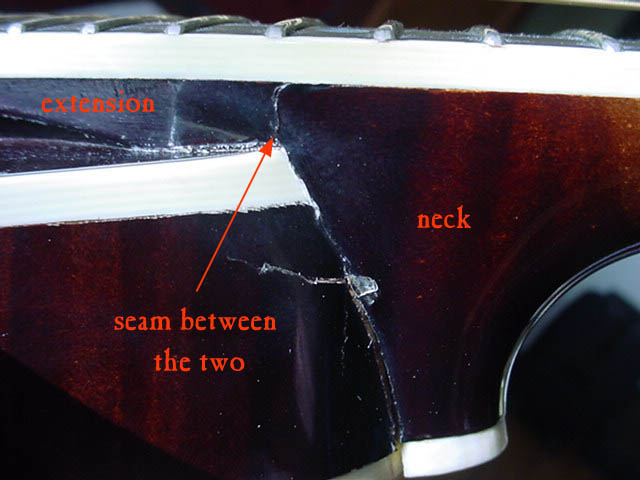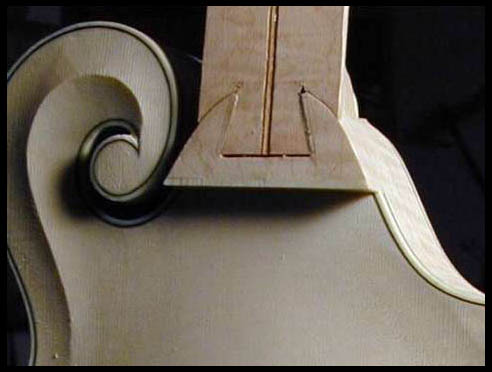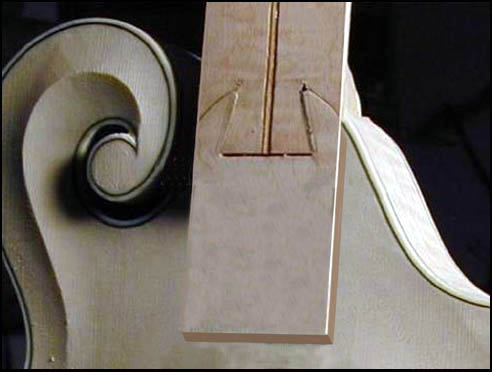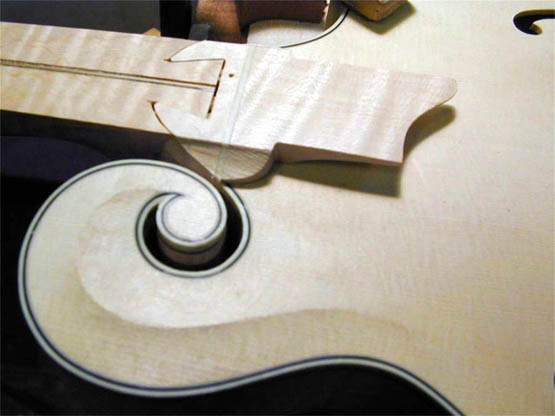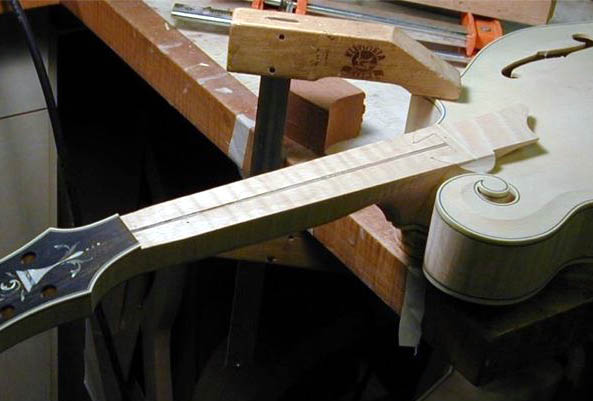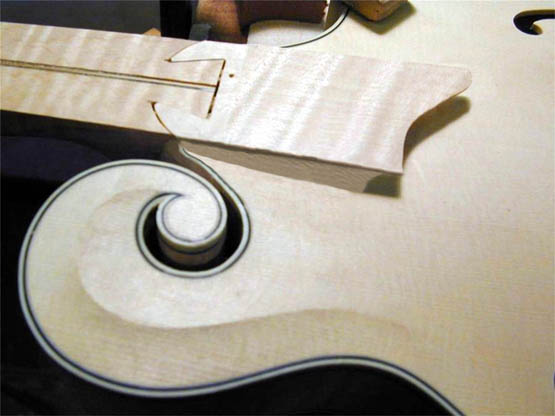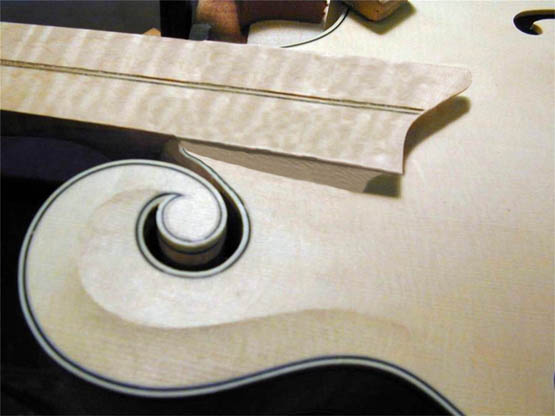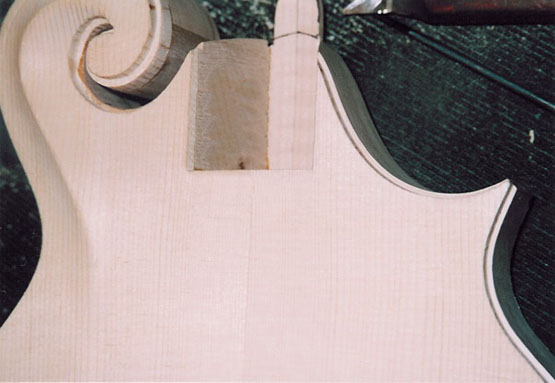| Mandolin neck joints
These images are manipulated from a few purloined from the net. Excuse the crude photoshop work, it was only to illustrate some possibilities. Here is an alleged one-piece neck.
This photo isn't very helpful, since you don't see the end of the board or how far that extension is attached to the top, and it's all under black or very dark lacquer, but I think it's really two pieces: the neck, and an extension. This is the usual deal: the neck at the desired height, with a dovetail extension, or riser, attached. The second extension floating off the face but supporting the board isn't here yet, but this is the typical dovetail neck joint.
Here's the full combo:
Notice that there are really three pieces here: the neck, the dovetail block extension (riser), and the support extension. There's a little ivoroid strip between the latter two, so in a way, it's four pieces. Here's a better photo, which shows that riser and the extension assembly after being shaped:
OK, here's a way to do away with the riser and that bulge:
This is the usual dovetail joint, but with a fingerboard support that attaches to the top. Mind you, the point of the original Gibson scheme is to free that part of the top to vibrate more. This kind of defeats that. Here's another variant of the same thing:
With sufficient lacquer cosmetics, this would look as though it was one piece. Here's a way you could actually do it as just one piece:
Unless one was extremely skilled at executing Japanese blind joinery, the simplest way to accomplish this would be to skip the dovetail and just do a simple mortise like this:
There are many ways to skin a cat. |
